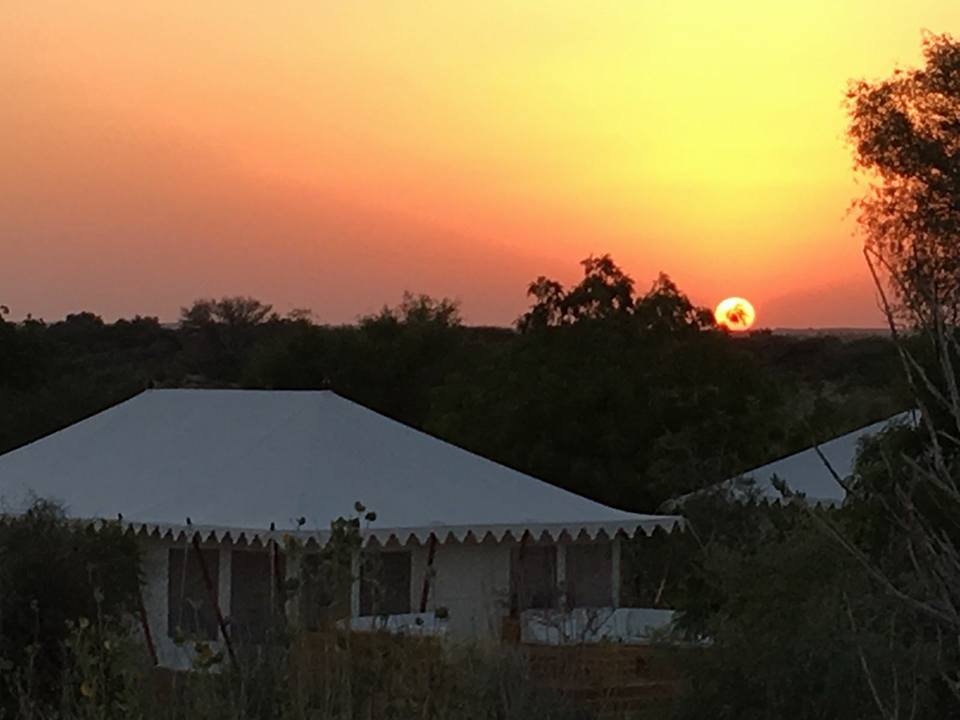Reeling from a trip to Rajasthan
I was excited as well as eager to return to India after several years. I had travelled to Goa for the beaches and Karnataka in my 20’s, enjoying the World Heritage listed buildings of Hampi, which are set among extraordinary volcanic boulders. Back then, I remember we had to hitch a lift on the back of a lorry for a five hour road trip as the public bus had broken down! I visited Madhya Pradesh and Uttar Pradesh in my 30’s stopping at Agra, Gwalior, Varanasi and Delhi (that trip was done in a bit more style and class) - so it was high time to visit Rajasthan in my 40’s, travelling in luxury with a favourite specialist to accompany me. My anticipation was fit to burst.
After arriving in Mumbai, we headed to our first hotel, the majestic Taj Mahal Palace & Towers. If you can, try to stay in the Palace Wing of the property. This hotel has seen many a famous person walk through her doors and the gallery of photos along the corridors are well worth a look if you have time.
Mumbai is also known as Bombay. It’s the commercial and entertainment capital of India. It’s a city with vibrant street life, some of India's best nightlife and a wealth of bazaars & shops. We were guided around on a heritage tour taking in the art deco cinema, gothic and Victorian style buildings, the lanes of old Colaba, the Kala Ghoda art district ending at the Times of India Building opposite Victoria Terminus.
Mumbai’s long association with the British is reflected in the old-world charm of its buildings. The well-known landmark of the Gateway of India is located on the waterfront - an arch 26 metres high and was the spectacular view from my hotel room at the Taj Mahal Palace.
While in Mumbai, we took a visit to the laundry quarters – the Dhobi Ghat, the only one of its kind in world. Prepare yourself – it’s enough to make you feel very humble and grateful for the technical privileges we have with most of us having a washing machine in our our homes. The bustling Crawford market and Mangaldas Market, the largest indoor cloth market in the city are also well worth a visit. I found it fascinating to see the dabbawallas or tiffin wallas in action as we walked around Mumbai. I learnt that the lunch boxes are picked up in the late morning from the train, delivered predominantly using bicycles and returned empty in the afternoon. Its almost a seamless operation.
Next stop was the JAWAI Leopard Camp. This gorgeous tented camp is completely immersed in Rajastani countryside. We arrived after sunset so the welcome of lanterns and candlelight pathways was truly magical. It’s a rambler's and twitcher’s paradise.
Jawai’s diversity of birdlife is both resident and migratory. A walk with a Rabari herdsman leaves you spell bound as you sense the shepherds’ connection with the land and the animals he guides across the rocky landscape.
The Rabari have shared this land with wildlife for centuries and the experience at Jawai will only leave you with deep respect for life in rural Rajasthan. You may be fortunate to find the leopards who roam wild and free in this unspoilt wilderness also. We were lucky!
Next point of call was a stay at the Serai. A sister property to Jawai, it is an oasis of calm and a place of rest and rejuvenation in the desert. The property stands proud with luxury tents surrounding solid walls carved in sandstone. It was the local craftsman who worked with the stone and they built a gorgeous central pool in a towering inverted step well. Truly beautiful!
It is from the Serai that we drove to Jaisalmer. No trip is complete without a visit to Jaisalmer. The golden city was founded in 1156 A.D. built 80 m high on Trikuta hill. Jaisalmer was well protected due to the hostile landscape and Bhati Rajputs, who are known for their valor and chivalry. They levied taxes on the caravans that traveled the ancient spice route on their way to Delhi and went on rampage over the nearby fortress acquiring huge wealth for the city. Not only the royalties but also the merchants benefited and they displayed their wealth in their beautiful havelis. Today this desert city is famous for its intricately carved havelis and old Jain temples. The sand dunes make it one of the most important tourist destinations in the country and a ride on a camel is a must!
From Jaisalmer, we headed to Jodhpur. A popular city, featuring many palaces, forts and temples. It is set in the stark landscape of the Thar Desert. Jodhpur is referred to as the Blue City due to the blue-painted houses around the Mehrangarh Fort. Jodhpur lies near the geographic centre of Rajasthan state, which makes it a convenient base for travel in a region. The old city of Jodhpur is surrounded by a thick stone wall. We experienced a surprise excursion in a vintage car to the Mehrangarh fort before being driven back to the hotel by tuk tuk. Such glamour!
It was from this point in my trip that I sincerely felt like I had become a member of the royal family! Built between 1928 and 1943, Umaid Bhawan Palace, our base for the next couple of nights, is a magnificent piece of Rajasthan’s heritage and a symbol of new Jodhpur. It’s home to the Jodhpur royal family and currently the world’s sixth-largest private residence.
The staff treat their guests like royalty too. Drums, bells, trumpets on each guest arrival, wined and dined under the stars after a magnificent firework display – it was hard not to feel dizzy with the detail and fuss made of our group. I was so overwhelmed by the Indian hospitality, I struggled to hold back tears of gratitude.I love India and am truly smitten by her lure. I will be returning. Kerala is next on my list.
Karen travelled with Nikhil Chhibber from Western Oriental accompanied with other travel business owners in October 2018. You can find out more about this trip if you call the agency 0208 675 7878 and speak to her or by dropping an email on info@travelmatters.co.uk.









